Description: Neither this crab species nor its family (Portunidae) are native to the Pacific Northwest coast. Members of Family Portunidae have a carapace described as "round, oval, or square" and without a rostrum. The fifth pair of legs is flattened and usually used for swimming. In some species (apparently such as this one) it is used for digging. Portunis maenas has an approximately oval carapace with three points between the eyes and five anterolateral teeth, making it look approximately like a cancer crab. Its color is variable--green, reddish, or brown. In my experience the molted carapaces are often but not always orange-brown (photos). The dactyl of the claws is mostly black. Maximum carapace length 6 cm, width = 9 to 10 cm.
How to Distinguish from Similar Species: Local cancer crabs (members of family Cancridae) have similar-shaped oval carapaces with no rostrum but their carapace has 5 points between the eyes and none of them has 5 anterolateral teeth on the carapace. The underside of Carcinus maenas also seems to have a distinctive dark-and-white pattern on the abdomen and maxillipeds as seen in the photo above. A closely-related species C. aestuarii, not currently found in the Pacific Northwest, has a smooth projection without the three points between the eyes.
Geographical Range: Native to the European coast of the Atlantic Ocean and Baltic Sea including Iceland, but introduced into Australia, South Africa, eastern and western North America, central America, Brazil, and Patagonia.
Depth Range: Mostly intertidal
Habitat: Wide variety of habitats but most common on soft bottoms. Can be found in rocky, muddy, or sandy substrates including in seagrass. Tolerates a wide range of salinity from 4 ppt at least to full seawater. Common in estuaries.
Biology/Natural History: This is
an infamous "invasive species" which was found in San Francisco Bay in
1989 but reached the Pacific Northwest by 1997 or 1998. It was first discovered
in Lummi Bay in the Salish Sea in 2019 and is spreading south into Padilla
Bay. It has also appeared at Mukkaw Bay and Cape Alava on the Washington
coast and in Willapa bay. Its diet includes bivalves such as clams such
as Mya
arenaria, scallops, mussels, and oysters; worms, and crustaceans, including
small crabs (up to their own size, including young Metacarcinus
magister) native to the Pacific Northwest. Large red rock crab Cancer
productus is an important predator. Carcinus
maenas digs burrows, and may compete for burrows with the Oregon
shore crab Hemigrapsus
oregonensis. Its color variations seem to be influenced by both
genetics and the environment, with delayed molting associated with red
colors instead of green. After a pelagic larval stage the juveniles settle
in seaweed or seagrass.
| Return to: | |||
| Main Page | Alphabetic Index | Systematic Index | Glossary |
References:
Dichotomous Keys:Carlton, 2007
General References:
Scientific Articles:
Burnett, Nicole, 2024: A practical identification guide to the zoeae of the invasive European green crab, Carcinus maenas (Linnaeus, 1758) (Decapoda: Brachyura: Carcinidae), and to the zoeae of the families of brachyuran crabs in Washington state, USA. Journal of Crustacean Biology 44:4. doi.org/10.1093/jcbiol/ruae064
Forward, Richard B. Jr., Richard A. Tankersley, and Dan Rittschof, 2001. Cues for metamorphosis of Brachyuran cabs: an overview. American Zoologist 41:5 pp. 1108-1122
Hunt, Christopher Erik, 2001. The role of predation by the red rock crab, Cancer productus, on the invasive European green crab, Carcinus maenas, in Yaquina Bay, Oregon. Oregon State University Master's Thesis in Environmental Science.
Towle, David W., and Dirk Weihrauch, 2001. Osmoregulation by gills of euryhaline crabs: molecular analysis of transporters. American Zoologist 41:4 pp. 770-780
Ruiz, Gregory M., James T. Carlton, Edwin D. Grosholz, and Anson H. Hines, 1997. Global invasions of marine and estuarine habitats by non-indiginous species: mechanisms, extent, and consequences. American Zoologist 37:6 pp. 621-632
Web sites:
General Notes and Observations: Locations, abundances, unusual behaviors:
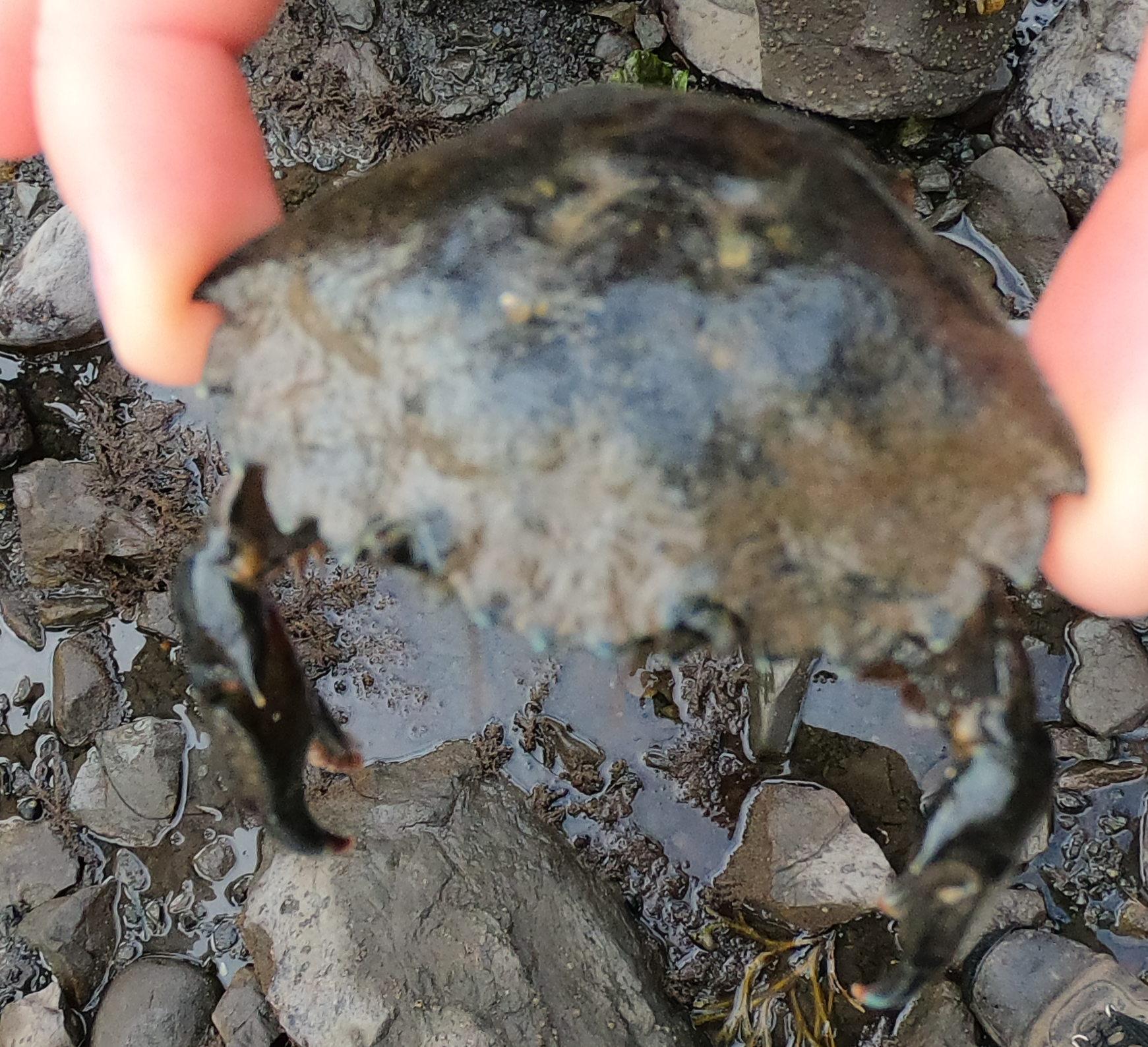
Dorsal
view of the crab shown at the top of the page. Captured live at Capa Alava,
WA. Photo by Dave Cowles (via GoPro camera, which can be difficult to focus)
| Dorsal and ventral views of a frozen male Carcinus maenas collected in Padilla Bay, WA courtesy of Roger Fuller from the Padilla Bay National Estuarine Research Reserve. Photos by Dave Cowles, July 2022 |
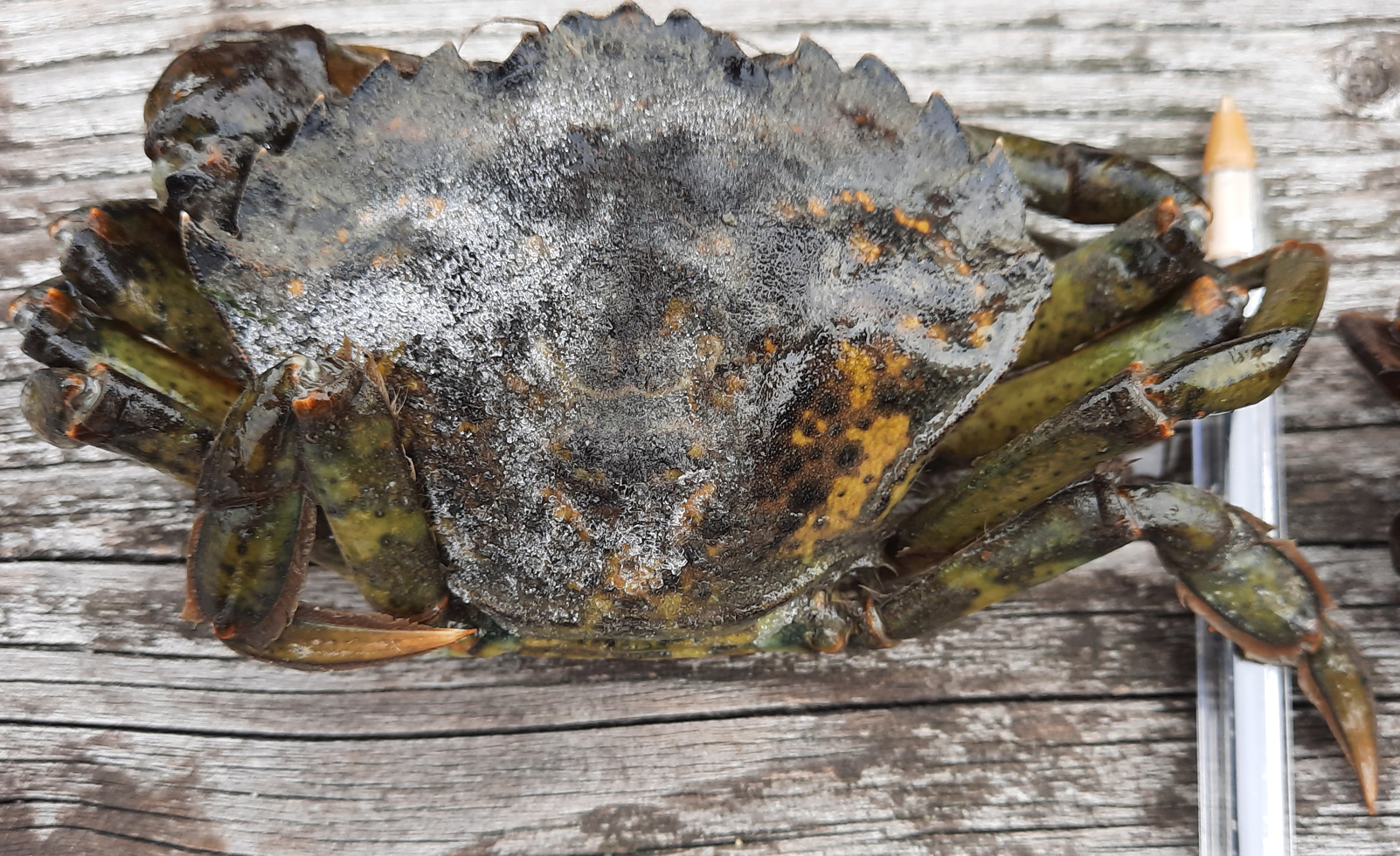 |
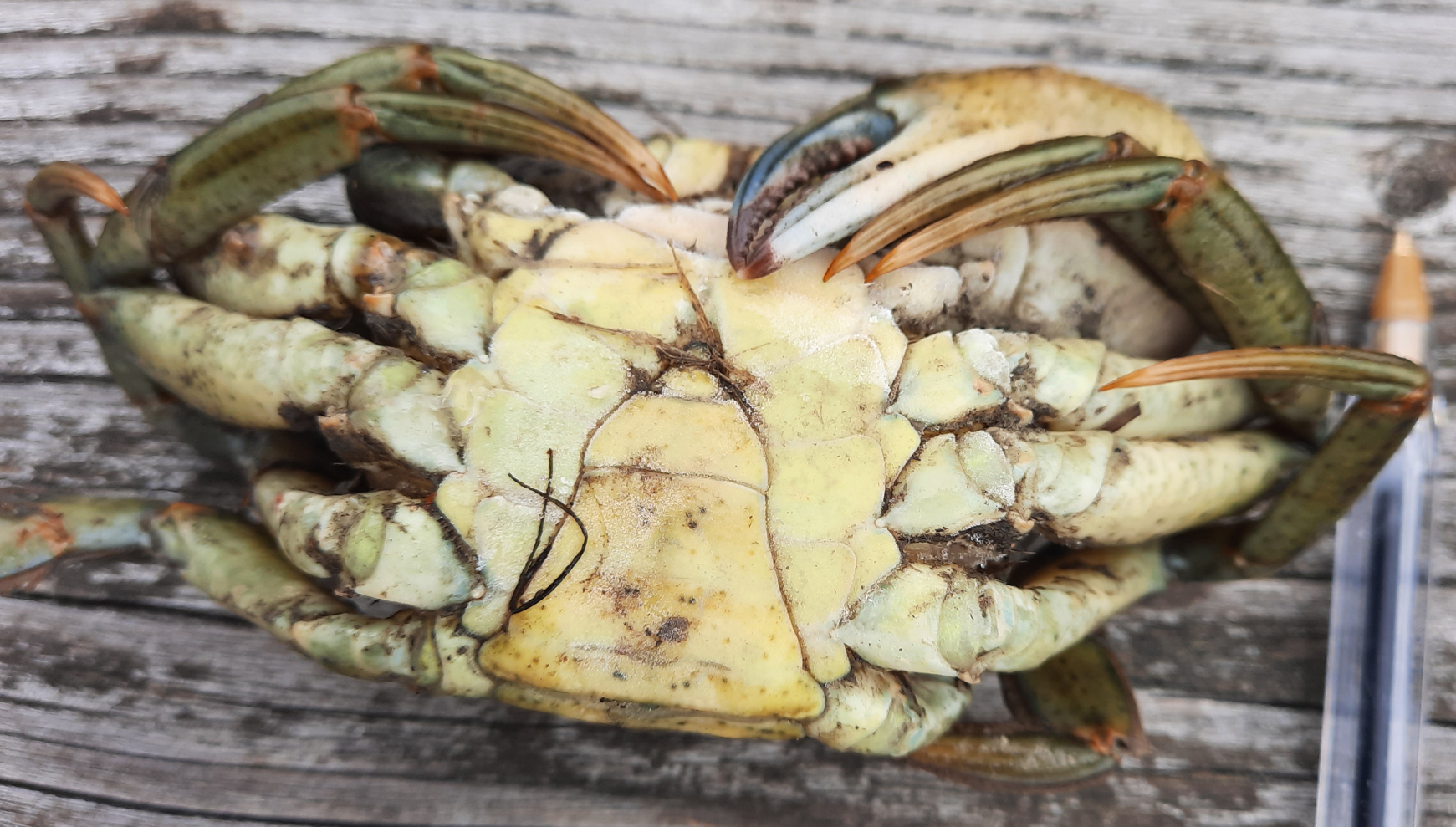 |
| Dorsal and ventral views of a frozen female Carcinus maenas collected in Padilla Bay, WA courtesy of Roger Fuller from the Padilla Bay National Estuarine Research Reserve. Photos by Dave Cowles, July 2022 |
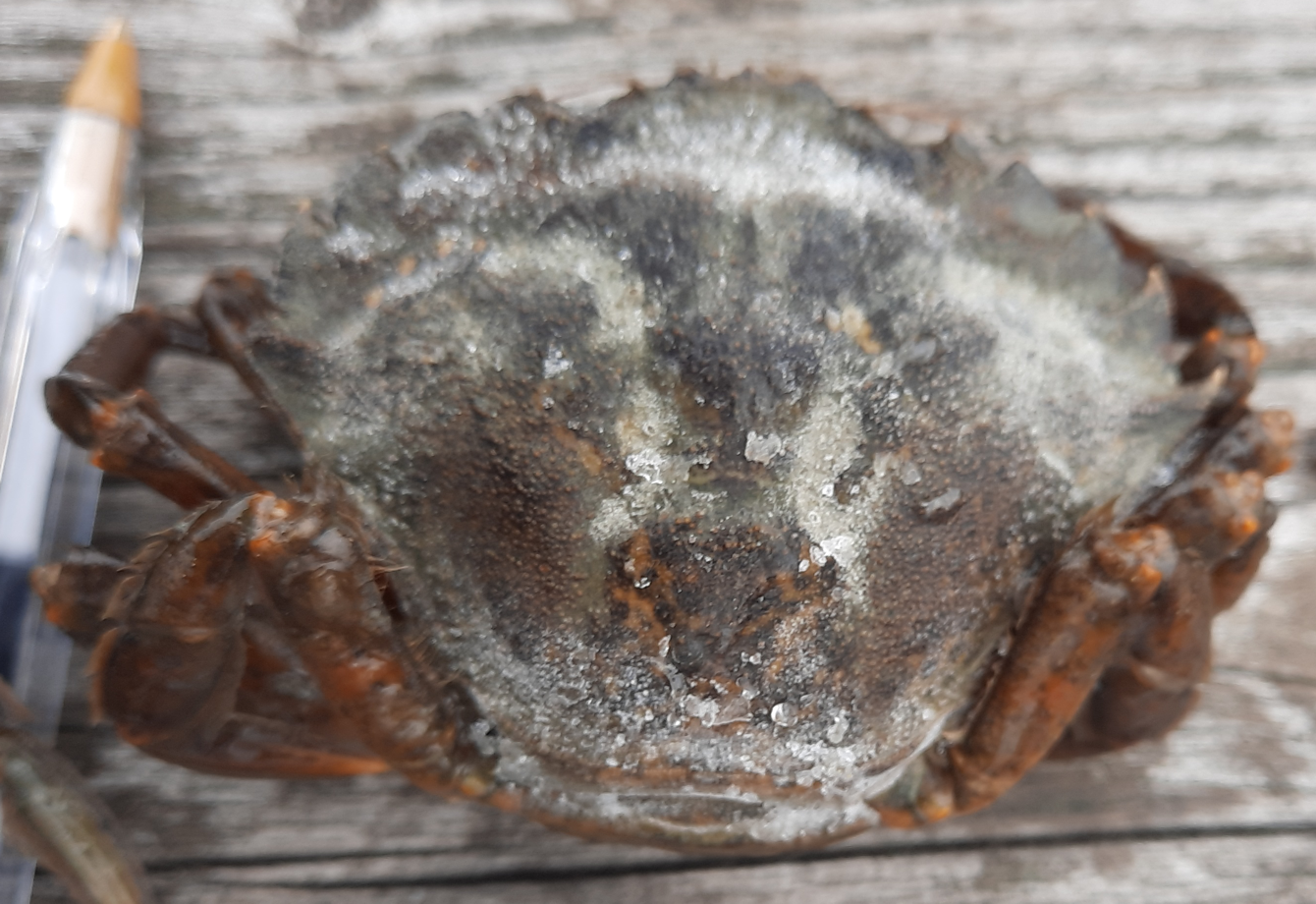 |
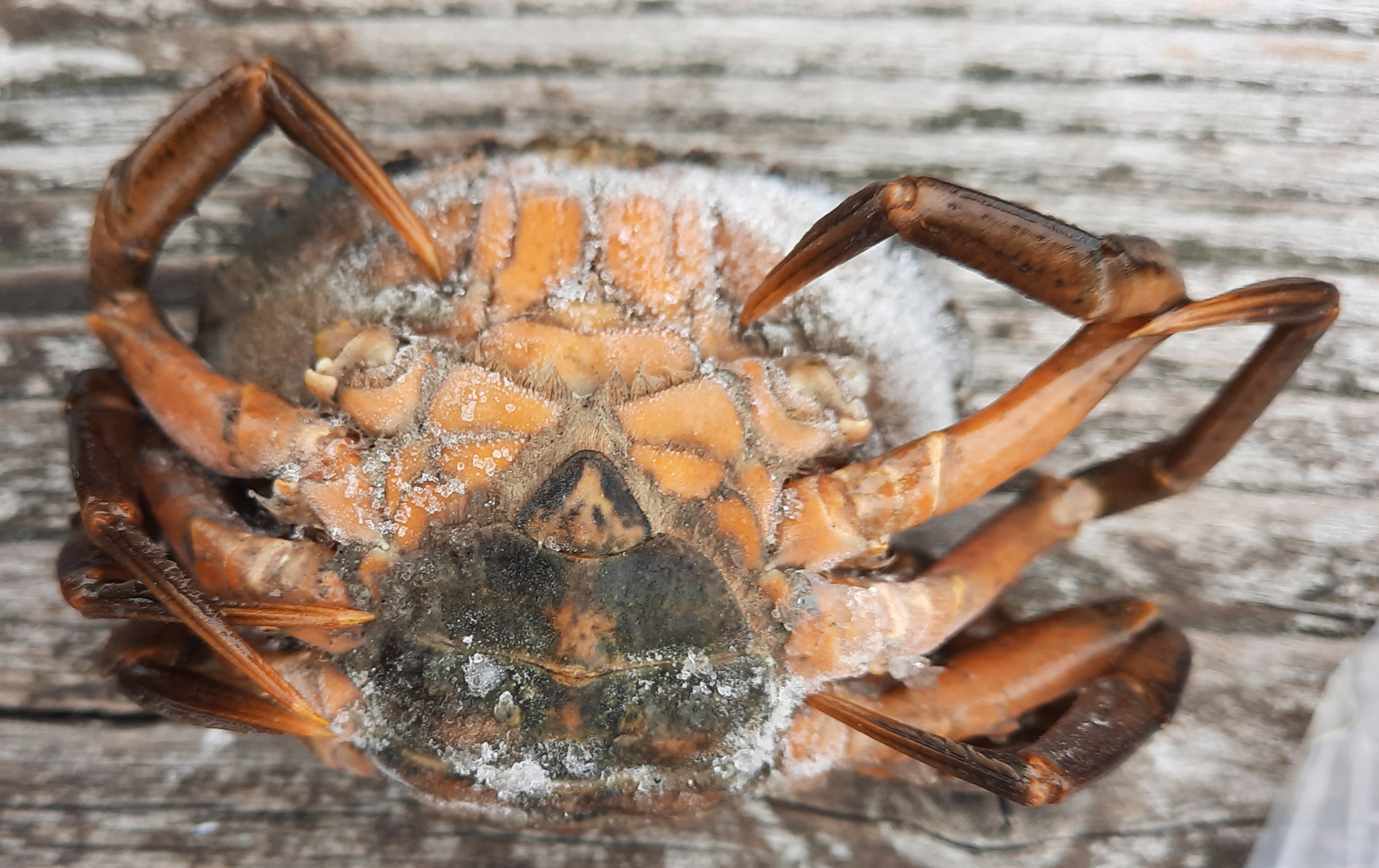 |
| Another live Carcinus maenas found at Cape Flattery July 2022. Photos by Dave Cowles via GoPro |
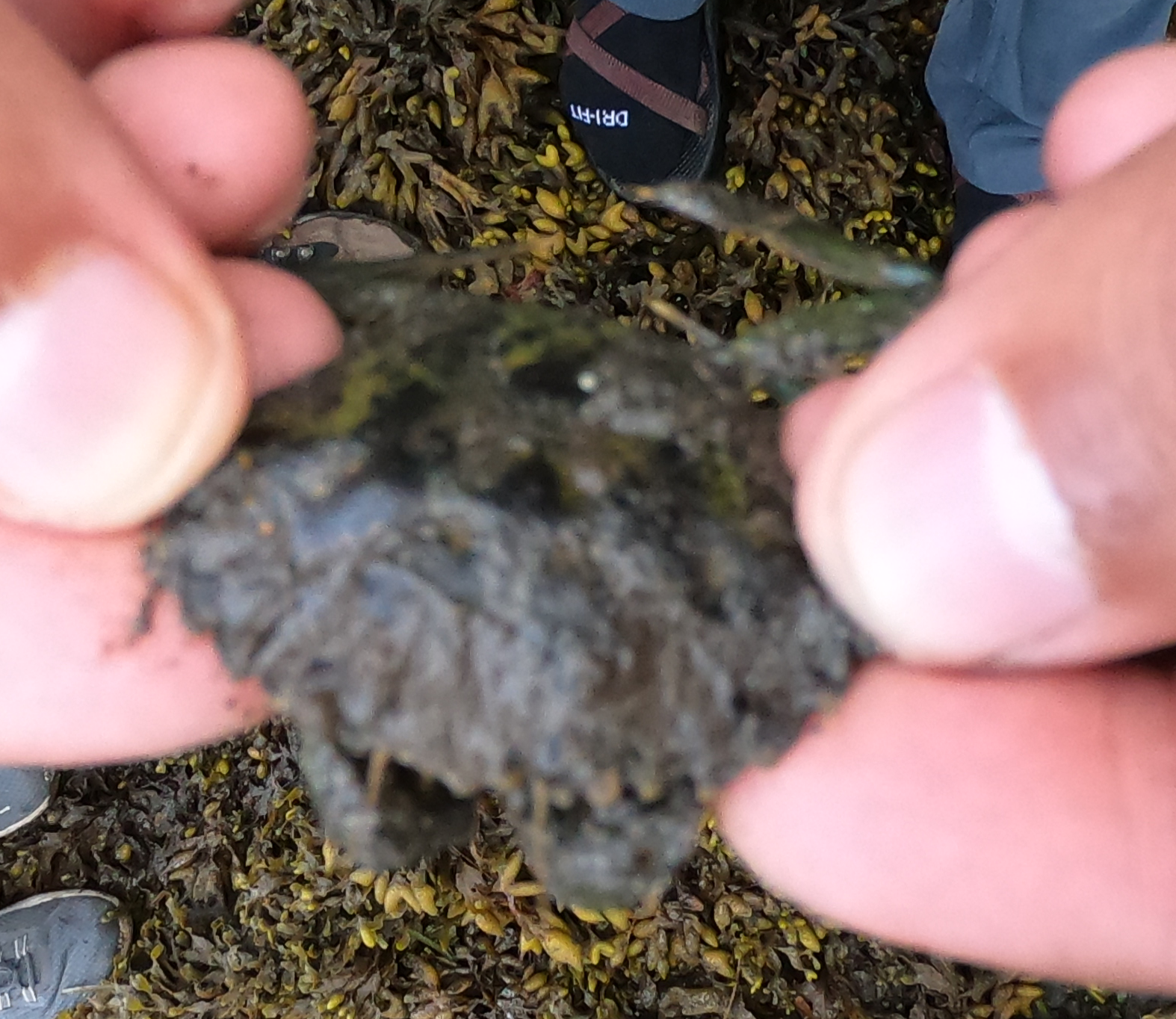 |
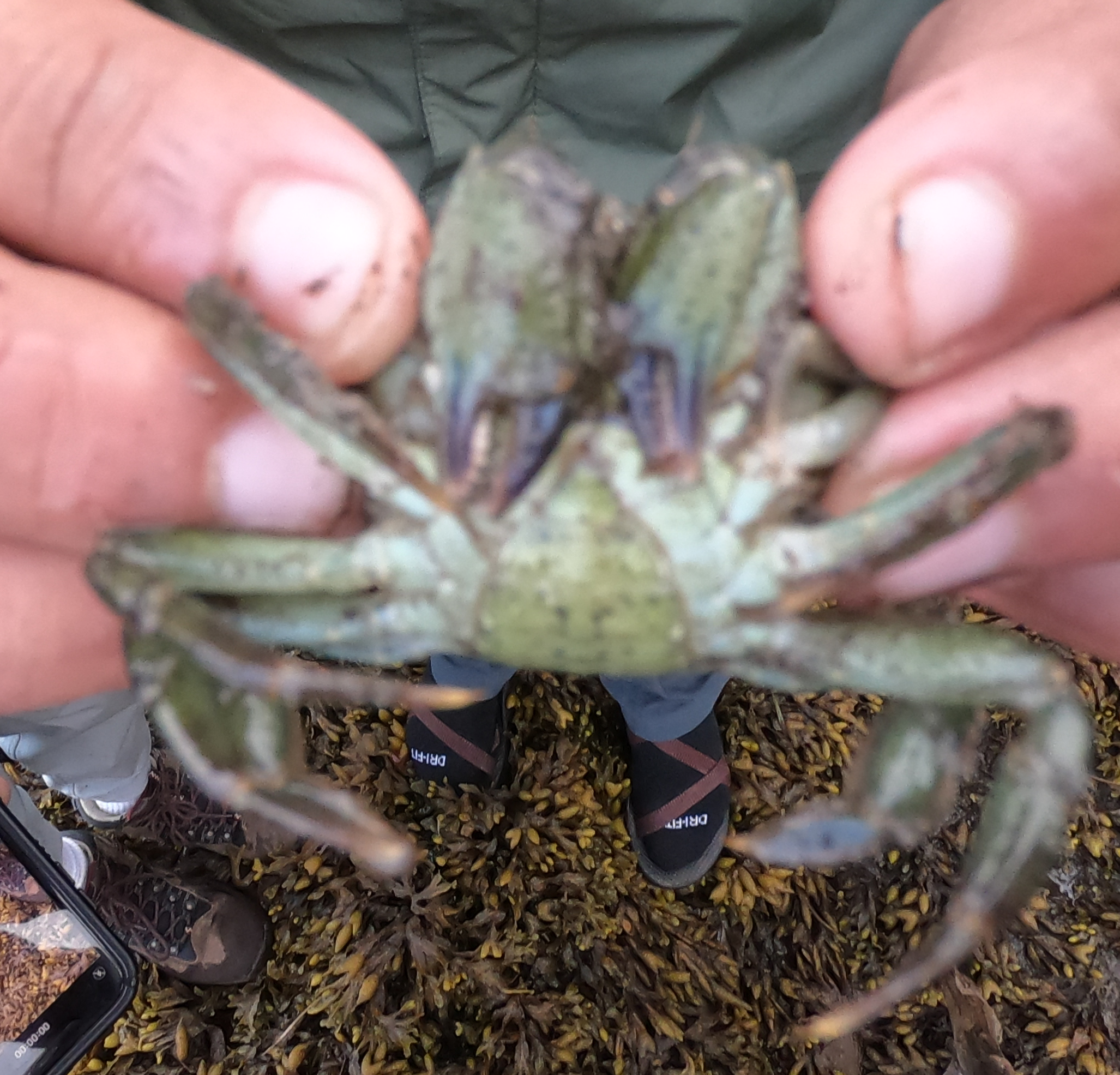 |
| Views of several carapace molts from Carcinus maenas we found on the Capa Alava beach intertidal, July 2022. Photos by Dave Cowles, via GoPro |  |
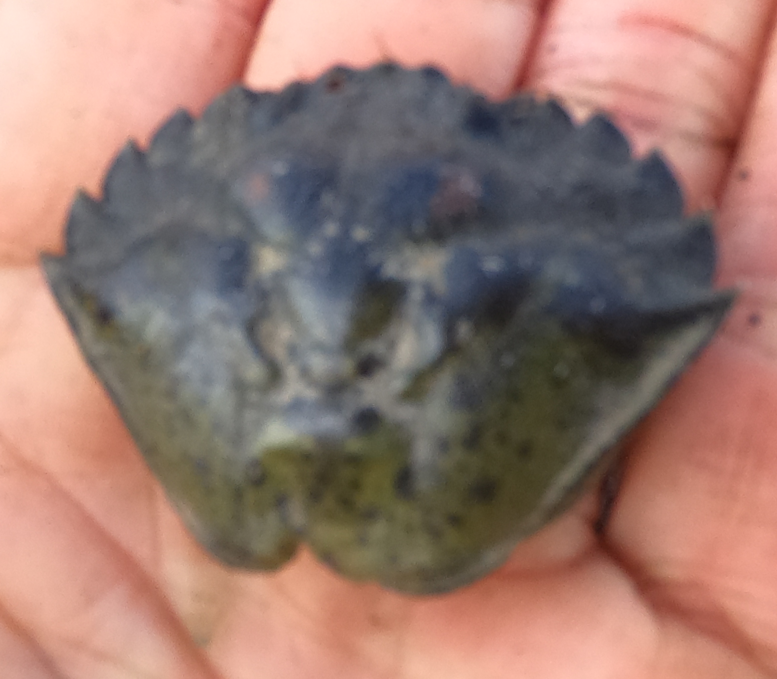 |
Authors and Editors of Page:
Dave Cowles (2022): Created original page
CSS coding for page developed by Jonathan Cowles
Salish Sea Invertebrates web site provided courtesy of Walla
Walla University